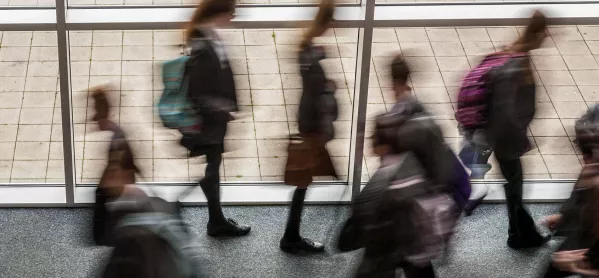Postcode lottery over secondary places

Fewer pupils are gaining places at first-choice secondary schools in a number of areas of England, new figures suggest.
The findings come as hundreds of thousands of pupils are finding out which secondary school they will be joining in September today.
But early indications from a survey of local authorities in England, excluding London, carried out by the PA news agency suggest that a student’s chances of winning a place at their preferred school vary significantly depending on where they live.
- News: Pupils getting into first choice school at highest level in years
- Exclusive: Birth rate pushes primaries to the edge
- Investigation: Why primaries fear their falling rolls
Responses from 33 councils show that 18 have seen a decline in the proportion of pupils getting their first preference, 14 have seen a rise and one has seen no change.
Among the areas where high proportions of pupils have obtained their first preference are Wiltshire, where 95.05 per cent got their top choice, and Wakefield, where 93.6 per cent also were offered their first pick.
In comparison, in Liverpool, only 67.2 per cent of children got their first preference, while in Birmingham, 71.68 per cent got their top choice.
Meanwhile, a survey by London Councils reveals that three in 10 pupils in the capital missed out on a place at their top choice of secondary school. A breakdown by borough shows significant differences in the proportion of families securing their top choice, with nearly two in five pupils missing out in some areas.
Lambeth had the lowest proportion getting their top choice at 61.56 per cent, and in Redbridge, just 62.79 per cent secured their first preference.
Barking and Dagenham had the highest proportion of first preferences at 81.67 per cent, followed by the City of London, where 81.25 per cent secured their preferred school.
Overall, 69.78 per cent of pupils who applied to start at a London secondary school this autumn received an offer from their first preference, compared with 69.95 per cent last year, figures show.
Across the capital, 92,641 pupils applied for a secondary school place - a 0.03 per cent decrease on last year. London Councils said application numbers were affected by a number of reasons “including varying pressures on different schools and local authority areas”.
It added: “Other important factors include migration changes, such as families moving due to changes in their circumstances and working patterns, along with the localised effect of the UK leaving the EU in some areas.”
Commenting on the PA survey, Paul Whiteman, general secretary of the NAHT school leaders’ union, said: “This can be an anxious time for families. Choosing the right school and securing a place there is a huge moment in a child’s life and not everyone will get their first choice today.
“There is extra pressure on secondary admissions this year as the pupil population bulge that has been moving through primary schools is currently hitting secondary schools. Many schools are particularly oversubscribed, especially in certain areas of the country.”
He added: “Until the government creates a national strategy to guarantee there are enough school places for every child in England, the annual anxious wait for families will continue.”
And commenting on the same survey, Geoff Barton, general secretary of the Association of School and College Leaders, said: “The number of pupils in secondary schools has been rising in recent years and is expected to continue to do so through to 2025.
“It is therefore very likely that there will be more pressure on secondary school places this year and next. This pressure will be most keenly felt by schools that are already oversubscribed.”
Official data shows that last year, 83.3 per cent of pupils were offered their first choice of secondary school - which was up slightly from 81.1 per cent in 2021.
A Department for Education spokesperson said: “The vast majority of families will be offered a place at one of their preferred schools and most will be offered their top place.
“We have already created over one million school places in the last decade - the largest increase in school capacity for at least two generations.
“We have also announced nearly £530 million to provide both primary and secondary places needed for 2023, and £940 million for places needed for 2024 and 2025.”
You need a Tes subscription to read this article
Subscribe now to read this article and get other subscriber-only content:
- Unlimited access to all Tes magazine content
- Exclusive subscriber-only stories
- Award-winning email newsletters
Already a subscriber? Log in
You need a subscription to read this article
Subscribe now to read this article and get other subscriber-only content, including:
- Unlimited access to all Tes magazine content
- Exclusive subscriber-only stories
- Award-winning email newsletters
topics in this article



